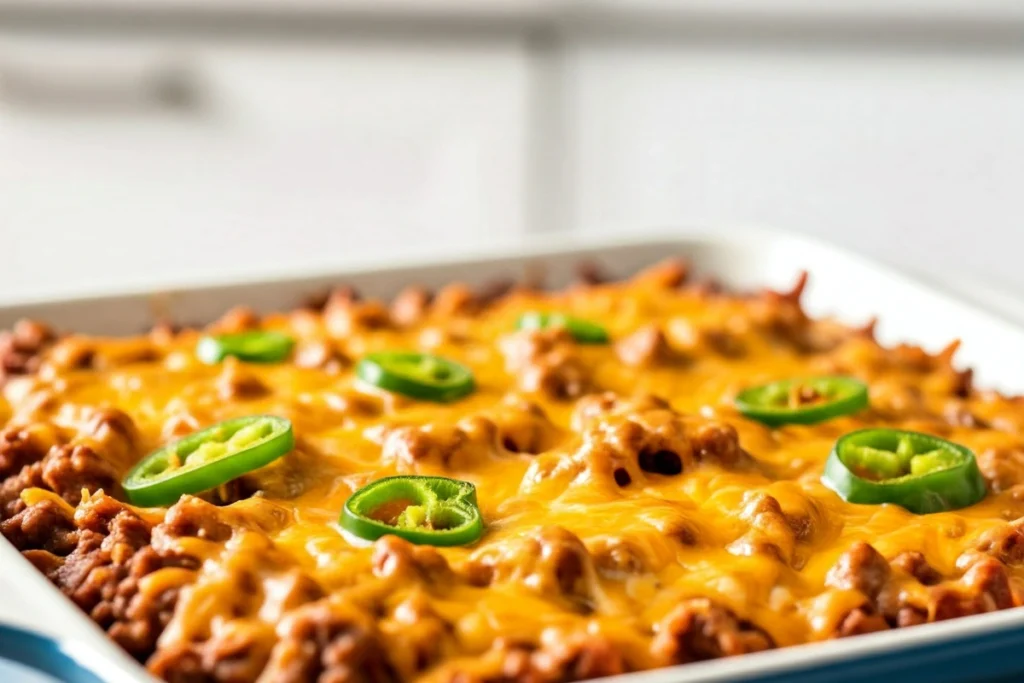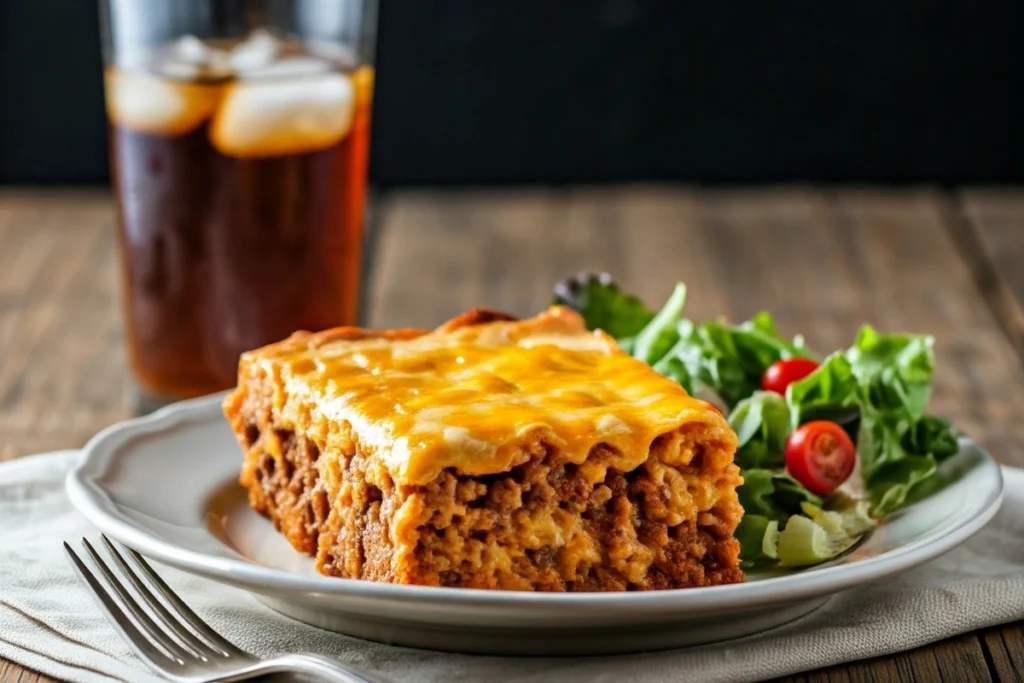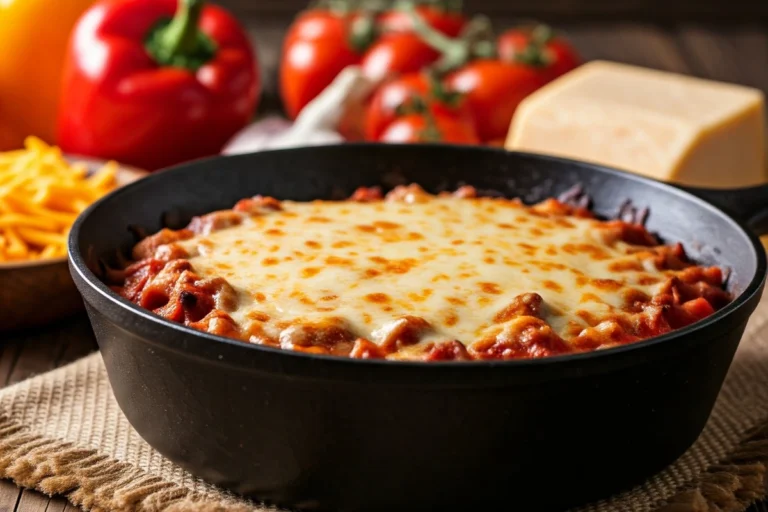John Wayne, an American icon known for his larger-than-life persona, has inspired not just movie fans but also culinary enthusiasts. One of the most intriguing ways he’s left his mark is through the delicious and hearty dish known as the John Wayne casserole. This article unpacks everything you need to know about this iconic recipe, from its history to step-by-step instructions, creative variations, and tips for serving. Whether you’re new to this dish or want to perfect your technique, you’ll find all the answers here. Let’s dive into the rich world of flavors and stories behind this beloved casserole.
Introduction to the John Wayne
The Origins of the John Wayne
The John Wayne casserole is as legendary as the man it’s named after. This layered dish is rumored to have been popularized in the 1970s, with its roots tied to comfort food traditions in the American Southwest. Some claim that the recipe originated from a cookbook where John Wayne himself contributed a dish, while others believe fans created it as a tribute. Either way, the casserole has become a culinary symbol of hearty, no-frills cooking.
The Meaning Behind the Name
The name, therefore, evokes a sense of ruggedness and simplicity, much like the characters John Wayne portrayed on screen. In fact, this dish reflects those qualities—it’s bold, satisfying, and doesn’t shy away from rich flavors. Thus, a casserole made for a cowboy is perfect for feeding a crowd or enjoying as a family meal.
Why It’s Become Iconic
The John Wayne casserole has stood the test of time because it’s adaptable, easy to prepare, and bursting with flavor. Its layers of meat, cheese, and vegetables make it a versatile choice for anyone craving comfort food. Plus, its nostalgic charm keeps it popular at potlucks, family dinners, and gatherings.
Ingredients for the Perfect John Wayne Recipe
Essential Ingredients for the Recipe
To answer “How do you make a John Wayne?” we must start with the ingredients. A traditional John Wayne casserole features layers of ground beef, diced tomatoes, onions, and bell peppers, topped with a creamy cheese mixture. Here’s what you’ll need:
- Ground Beef: The base for a hearty and flavorful casserole.
- Diced Tomatoes and Green Chiles: These add a tangy and slightly spicy kick.
- Onions and Bell Peppers: For a touch of sweetness and crunch.
- Bisquick or Biscuit Mix: To form the crusty bottom layer.
- Sour Cream and Mayonnaise: These provide a creamy, tangy top layer.
- Cheddar Cheese: The star ingredient that ties everything together.
Variations of the Ingredients for Dietary Preferences
If you’re looking to adapt this recipe to suit dietary needs:
- Gluten-Free Option: Swap the Bisquick with a gluten-free baking mix.
- Vegetarian Alternative: Substitute the ground beef with plant-based protein or beans.
- Low-Fat Version: Use reduced-fat cheese and sour cream to cut down on calories.
Nutritional Information Per 100g
| Nutrient | Amount |
|---|---|
| Calories | 250 kcal |
| Protein | 15g |
| Fat | 18g |
| Carbohydrates | 12g |
| Sodium | 540mg |
For more inspiration, explore Goldy Recipe’s guide on casseroles, offering tips for layering and flavor enhancement.
Step-by-Step Guide to Making a John Wayne
Preparing the Base
- Cook the Ground Beef: Start by browning the ground beef in a skillet over medium heat. Add diced onions and bell peppers, cooking until softened.
- Season Generously: Use garlic powder, chili powder, and salt to enhance the flavor.
Layering for Flavor
- Spread the Base: In a greased baking dish, layer the cooked beef mixture evenly.
- Add the Tomatoes: Pour a layer of diced tomatoes and green chiles over the beef.
- Top with Biscuit Mix: Prepare the Bisquick as directed and spread it gently on top of the tomato layer.
Final Touches and Serving Suggestions
- Create the Creamy Topping: Mix sour cream, mayonnaise, and cheddar cheese, then spread this mixture over the biscuit layer.
- Bake to Perfection: Place the dish in a preheated oven at 350°F (175°C) and bake for 30-35 minutes until golden brown.
- Serve Warm: Garnish with fresh cilantro and serve with a side salad or garlic bread.

Looking for more casserole tips? Check out Goldy Recipe’s creative casserole ideas.
The History Behind the Recipe
Connection to John Wayne, the Actor
The John Wayne casserole is more than a comfort food classic—it carries a name that evokes images of rugged cowboys and Wild West adventures. Named after the legendary actor John Wayne, this casserole supposedly reflects the hearty meals he enjoyed or represented in his iconic roles. While there is no direct evidence that Wayne himself created the recipe, its popularity is often linked to the cookbook Cooking with John Wayne, which featured some of his favorite dishes.
How the Recipe Gained Popularity
The casserole rose to fame during the 1970s and 1980s, coinciding with a resurgence of interest in retro and Americana-themed dishes. This dish, with its layers of bold flavors and simplicity, became a go-to recipe for potlucks and family dinners. Its reputation as a no-fuss, crowd-pleasing meal ensured it a permanent spot in cookbooks and online recipe collections.
Cultural Impact
The John Wayne casserole continues to inspire creativity in kitchens across the U.S. Its popularity reflects not just a love of food but also a nostalgic longing for classic Americana. Whether served at Sunday dinners or shared during tailgate parties, the dish remains a timeless reminder of simpler times and enduring culinary traditions.
For more timeless recipes, explore this guide to classic comfort foods.
Variations and Creative Twists
Vegetarian and Vegan Adaptations
If you’re wondering, How do you make a John Wayne suitable for vegetarians, it’s surprisingly simple. Substitute the ground beef with black beans or lentils for a protein-packed base. Add mushrooms or zucchini for extra texture and flavor. For vegan options, swap the cheese with plant-based alternatives and use dairy-free sour cream.
Regional Spins on the Recipe
Across the country, cooks have reimagined this dish to reflect local flavors. In the Southwest, it often includes jalapeños and spicy sausage. In the Midwest, the dish might feature a layer of mashed potatoes or creamed corn for added heartiness. These regional variations ensure the casserole feels both personal and universal.
User-Inspired Modifications
Creative home cooks frequently customize this casserole. Some add crispy fried onions for a crunchier top layer, while others incorporate a layer of refried beans for a Tex-Mex twist. You could even try topping the dish with crumbled tortilla chips for a fun, crispy finish.
For more inventive casserole ideas, check out this guide to transforming everyday ingredients into culinary delights.
Common Mistakes and How to Avoid Them
Errors in Ingredient Selection
When preparing a dish as rich as the John Wayne casserole, ingredient choices matter. One common mistake is using low-quality ground beef, which can result in a greasy or bland base. Opt for lean ground beef, preferably 80/20, for the best balance of flavor and texture. Another error is substituting fresh vegetables with canned ones without draining them. Excess liquid from canned ingredients can make the casserole soggy.
To get the best results, stick to high-quality ingredients and follow the recipe’s guidelines closely. If you’re asking, How do you make a John Wayne casserole that doesn’t fall apart? the answer often lies in properly draining and measuring your ingredients.
Mistakes in Preparation Techniques
Even with the right ingredients, preparation missteps can affect the final result. Overmixing the biscuit layer is a frequent problem. This can lead to a dense or rubbery crust. To avoid this, mix the biscuit dough gently and only until combined. Another common issue is not preheating the oven. A cold oven can cause uneven baking, leaving the dish undercooked in some areas and overcooked in others.
For smooth assembly, layer the ingredients carefully and avoid skipping steps. Each layer plays a crucial role in the dish’s texture and flavor.
Troubleshooting Tips
If your casserole turns out too dry, consider adding a touch of milk to the cheese mixture next time. On the other hand, if it’s too wet, reduce the amount of liquid ingredients or bake it a bit longer to allow excess moisture to evaporate. Paying attention to these small details can make a big difference in your final dish.
Serving Suggestions and Pairings
Drinks to Pair with the Dish
The John Wayne casserole pairs wonderfully with bold, flavorful drinks. A crisp lager or a medium-bodied red wine, like a Zinfandel, complements the hearty layers of beef and cheese. For non-alcoholic options, a classic iced tea or a sparkling lemonade can balance the casserole’s richness.
Ideal Side Dishes
If you’re still asking, How do you make a John Wayne casserole the star of the meal?, the answer lies in the side dishes. A fresh garden salad with a tangy vinaigrette adds a light, refreshing contrast to the casserole’s heavy flavors. Garlic bread or cornbread is perfect for soaking up the cheesy goodness, while a serving of roasted vegetables provides a nutritious and colorful addition.
Presentation Ideas
How you serve your John Wayne casserole can elevate the dining experience. Serve it in individual ramekins for a more elegant touch, or present it family-style in a cast-iron skillet for a rustic, Western-themed vibe. Garnish with freshly chopped parsley or cilantro for a pop of color and a hint of freshness.

For more creative serving ideas, consider pairing this dish with other comforting classics like those featured in this casserole guide.
FAQs About the John Wayne Recipe
Can I Make It Ahead of Time?
Absolutely! The John Wayne casserole is a great dish to prepare in advance, making it ideal for busy schedules or planned gatherings. To do this, assemble the casserole as directed, but hold off on baking it. Cover it tightly with plastic wrap or foil and store it in the refrigerator for up to 24 hours. When you’re ready to bake, allow it to sit at room temperature for about 30 minutes and bake as usual.
This flexibility makes answering How do you make a John Wayne casserole fit into your schedule? easier than ever. Preparing ahead lets you save time without sacrificing flavor.
What’s the Best Way to Store Leftovers?
Leftovers can be stored in an airtight container in the refrigerator for up to three days. When reheating, use the oven to maintain the texture of the crust and layers. If you’re short on time, the microwave works, but it may make the crust softer. To freeze leftovers, wrap individual portions tightly and store them in the freezer for up to two months.
Is This Recipe Gluten-Free?
The traditional John Wayne casserole is not gluten-free because it uses a biscuit layer made from Bisquick or similar mixes. However, you can easily make it gluten-free by using a certified gluten-free baking mix. Be sure to check the labels on other ingredients, like canned tomatoes and spices, to ensure they are also gluten-free.
For more tips on dietary adjustments, explore other creative casserole recipes.
Nutritional Benefits and Concerns
Health Benefits of the Ingredients
Despite its hearty reputation, the John Wayne casserole contains several nutrient-rich ingredients. Ground beef provides a good source of protein and iron, while the vegetables add fiber, vitamins, and antioxidants. Cheese and sour cream contribute calcium and protein to the dish.
Tips for Making a Healthier Version
If you’re asking How do you make a John Wayne casserole healthier?, there are many simple tweaks. Opt for lean ground beef or substitute with ground turkey to reduce fat content. Use low-fat or fat-free versions of sour cream and cheese. Adding extra vegetables, such as zucchini or spinach, boosts fiber and nutrients without adding extra calories.
Balancing Indulgence with Nutrition
While the casserole is undeniably indulgent, portion control can help you enjoy it without overdoing it. Pair smaller servings with lighter sides, such as a green salad or steamed vegetables, to create a balanced meal. Remember, this dish is meant to be a treat, so savor it in moderation.
For additional inspiration on balancing comfort and health, check out our guide to casseroles.

